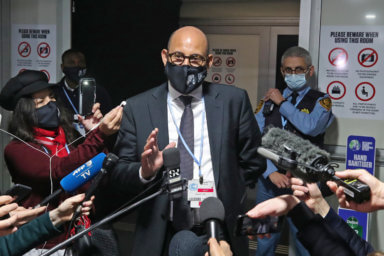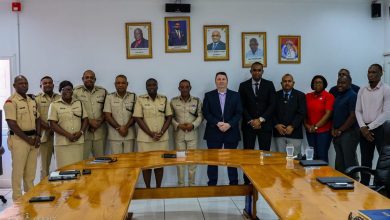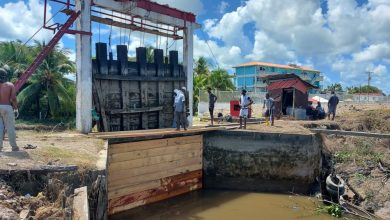Op-Ed: Protecting nature to protect the future we want

A global group of scientists and experts known as the Intergovernmental Panel on Climate Change (IPCC) have for several years provided scientific guidance to international governments in an effort to advance action on global warming. Last week, the IPCC’s latest scientific report on the climate crisis was released. It was uncharacteristically blunt in its conclusions: “Any further delay in concerted anticipatory global action on adaptation and mitigation will miss a brief and rapidly closing window of opportunity to secure a liveable and sustainable future for all.”
Reports issued by the IPCC are meant to assist all governments in creating workable solutions to mitigate the impacts of the climate crisis by providing expert advice. In recognition of the rallying cry by global small islands to cap global temperature rise by 1.5C, the IPCC also provides customized recommendations for nations like ours.
This latest IPCC report comes as a stark reminder that the world has already warmed 1.1oC, just a few degrees shy of the 1.5C temperature goal. With its most pressing recommendations no longer tailored toward vulnerable geopolitical regions like our own, it made strikingly clear that the entire globe was at risk.The wording throughout the text of this latest report was the strongest yet. It emphasized the need for all nations to rapidly advance concerted and science based action to mitigate the devastation of climate change and find opportunities to rapidly transition away from unsustainable economic models. This is the reason why our governments, Barbados, Grenada, and Jamaica and a growing coalition of Caribbean nations are part of the 85 + member strong collective championing a global deal for nature and people with the central goal of protecting 30% of the world’s land and sea by 2030.This 30×30 goal launched by the High Ambition Coalition (HAC) for Nature and People, is co-chaired by the governments of Costa Rica, France, and the United Kingdom — our allies in advancing the globe toward a more sustainable future. The HAC’s promotion of the 30×30 target is a proactive country driven response to the climate and biodiversity emergencies that face our planet, particularly small vulnerable economies such as those of the Caribbean.
But what exactly does protecting 30% of the planet’s environment look like? The 30×30 goal is an international target that aggregates the protected areas of every participating nation and was designed to complement each nation’s abilities. For example, large ocean states like ours area better position to protect large portions of our marine resources, while an almost entirely landlocked country can commit to a much larger land protection goal. Steeped in science, this 30×30 target will safeguard almost a third of our planet’s oceans and lands including the biodiversity and critical ecosystem services they provide. More pressingly, it will provide a third of the climate mitigation needed by 2030 to ensure our planetary survival.
Our Caribbean nations are only as strong as the environment they rely on, and the 30×30 goal allows our nations to inject much needed resilience into our natural ecosystems to ensure that our people, culture and economies have a fighting chance in responding to climate change.
Effectively managing our natural assets also ensures that our nations collectively build and learn together to advance beyond our current vulnerabilities and lay the foundation urgently needed to support achievement of the 2030 Agenda for Sustainable Development.
As Barbados’s Prime Minister Mia Mottley, the only Caribbean leader featured at the opening ceremony at last year’s global climate conference shared during her address, the onus is on today’s governments to advocate and champion the preservation of their nations:“Leaders today,not leaders in 2030 or 2050, must make this choice.
It is in our hands. Our people and our planet need it.”It should come as no surprise then that our governments and our region are especially committed to implementing sustainable solutions. 30×30 is therefore an essential guide to our sustainable In late February, we represented our governments amongst global delegates in Nairobi, Kenya, as part of the United Nations Environment Assembly (UNEA). At this meeting we discussed pivotal next steps to protecting the planet’s biodiversity and agreed to a resolution tailored to actioning the integration of decisive conservation measures into our domestic policy.
The meeting also revealed that vulnerable nations like ours will need a total of $60 billion in finance from major economies to protect our natural resources.
This was a landmark moment for the conservation sector as it made more evident than before just how impracticable it is for vulnerable nations to play a contributing role in 30×30 and catalyze our sustainable development without the assistance of the international community.With over 85 countries taking part in the 30×30 target, a much clearer picture emerges of how this rallying call can be successful. Certain key biodiversity rich regions like ours are being relied on to protect a percentage of both land and water given our cultural and economic dependence on




